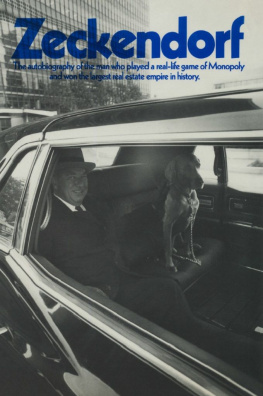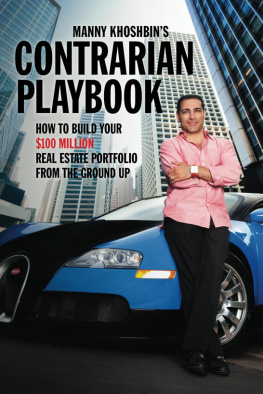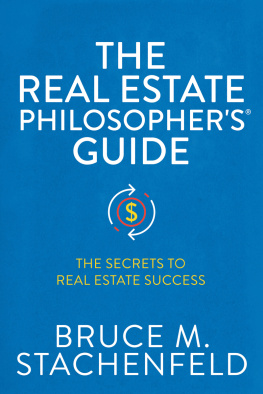
"I speak about an extraordinary American pioneer of immense imagination, courage and nerve...a man of fathomless loyalty, generosity and public spirit. Take him for all in all, we shall not look upon his like again. I only hope that ambitious young Americans eager for genuine achievement rather than ordinary financial and social success will take a chapter from the book of William Zeckendorf."
Robert Moses, from his eulogy
at the services for William Zeckendorf,
October 3,1976
ZECKENDORF
Not since the days of the Louisiana Purchase has America seen any bigger real estate transactions than those executed by William Zeckendorf, the derring-do head of Webb & Knapp. Figuring with supersonic speed and an uncanny flair for making money, the flamboyant impresario bought and sold property, remodeled whole sections of New York, Denver, Washington, Montreal and Dallas, and moved the UN, the capital of the world, to New York. At the peak of his power, William Zeckendorf was a man with the Midas touch in an age of computers.
From his windowless teakwood igloo office set in a white marble lobby (designer I.M. Pei explains, "It would be ridiculous to create any environment for him other than one consisting exclusively of himself."), William Zeckendorf played a real-life game of Monopoly and won the largest real estate empire in the world so large, in fact, that Wall Street tottered when he went bankrupt. And bankrupt he was, but never in spirit.
Now beginning what he calls his "second life," William Zeckendorf says, "I've had no reverses of anything except money. My sense of accomplishment is full, and the cities and the art and the architecture I have influenced will live long after I am gone."
An autobiography bursting with vitality, enthusiasm, and financial knowhow, Mr. Zeckendorf reveals himself as a visionary whose creativeness and sense of adventure are matched only by his unalloyed joy at being able to successfully juggle a dozen incredibly complicated transactions at once. The spectacular Mr. Zeckendorf, who has fished for piranhas in South America and sold ships to the Greeks at profit, comes to life in this autobiography. You will not want to miss meeting him.
William Zeckendorf's grandfather was a German immigrant and Indian trader who, in 1868, established a store in Tucson, Arizona. It is still doing a flourishing business there under the name of Steindorf's. Mr. Zeckendorf was born in Paris, Illinois, in 1905. Shortly thereafter, the family moved to Long Island where he spent a classic American boyhood. He attended public schools and dropped out from New York University to work for an uncle in the real estate business. Since the collapse of Webb & Knapp, Mr. Zeckendorf has worked with his son, William, Jr., and his son-in-law, Ronald Nicholson, in a new real estate firm.
PLAZA PRESS
Chicago, Illinois
PLAZA PRESS
Chicago

Copyright 2014 by Plaza Press, Chicago, Illinois, U.S.A
All rights reserved.
Cover Designed and Photographed by Larry Ratzkin
ISBN 10: 0615993524
ISBN 13: 9780615993522
FOREWORD
Real estate developers have big egos and big plans. They are indefatigable promoters for their deals. They are unrelenting optimists. Developers tend to bounce from dramatic economic highs to precipitous lows- back and forth. Bill Zeckendorf was no exception. What made Mr. Zeckendorf special was his love of making blockbuster development deals such as the site acquisition for the United Nations, Roosevelt Field Mall, virtually all of Wall Street, Place Ville Marie, Century City, Society Hill to name a few. Bill Zeckendorf was truly a pioneer in real estate finance. His innovation and understanding of complex capital structure enabled him to make deals that others could not (e.g. The Hawaiian Technique). He also knew that great design sells itself. Why else have I.M. Pei and Harry Cobb, two of the world's most talented architects, on staff? Bill Zeckendorf's passion was achievement in monumental developments and deals; money was merely a by-product of his efforts.
A lot has happened since Bill Zeckendorf was working his magic on the American urban landscape. For one, real estate has become more institutional. Once in a while, a developer appears on the scene who is a highly creative character, driven to produce innovative projects with the power of personality to make it all happen. It is these visionaries that take our civilization a step or two forward. Look for him or her in the news. Like Bill Zeckendorf they are exciting and inspiring.
PLAZA PRESS
John Colt Landreth
March 2014
ACKNOWLEDGEMENTS
The following people made contributions and supported us in the republishing of this book:
I.M. Pei
Leicia Black
Nancy Horn
Marvin Lifschitz
Thomas C. Turner
Donald A. King
PLAZA PRESS
John Colt Landreth
To dear Marion
for many, many reasons
Contents
.
Twenty-four pages of illustrations follow page 180.
One
Prologue
LATE ON FRIDAY afternoon, May 7, 1965, I asked my chauffeur to drive me down to Wall Street for one more visit with my creditors. After that there would be the blessed relief of the weekend.
As we were traveling down the East River Drive, my car phone rang. I picked it up. It was a reporter from The New York Times asking, "Is it true that Webb & Knapp is going into bankruptcy?"
I said, "My boy, somebody is pulling your leg. Webb & Knapp is not going into bankruptcy. We are paying our debts and will continue to do so."
I put down the phone. It rang again. This time it was Larry O'Donnell of The Wall Street Journal. He asked the same question. Again I said no, but now I knew something concrete must be causing these rumors. I called my office. They knew of nothing. A few seconds later, however, the office called me back. The Marine Midland Bank, as trustees of an old 8.5-million-dollar Webb & Knapp bond issue, had just called in this note. Webb & Knapp was being put into bankruptcy.
The note the Marine Midland was calling in was signed years ago when we bought 120 Broadway, for which we had paid more than eight million dollars in cash plus 8.5 million dollars in notes. Under what is called the boiler plate (the standard small print of any contract) there was a particular clause which stated that Marine Midland could demand full payment of the note before its maturity date if Webb & Knapp could not meet its obligation as duein other words, they could collect the 8.5 million dollars whenever they wished, once they learned Webb & Knapp had not paid one of its other creditors.
Ironically, we were not in arrears either as far as interest or principal on the Marine Midland note, but there was no defense against the statement that we were not meeting other obligations. For more than three years I had been maneuvering to keep a suddenly greatly overextended Webb & Knapp from actually falling over the edge of the cliff. To this end I had gone into deep personal debt, often by countersigning the notes necessary to keep the company going. We had, of course, curtailed expansion, and we were liquidating assets and retiring debts as rapidly as possible. Knowing what we had accomplished in tight corners in the past, as well as our capacity for making money, our creditors had been riding with us. With just a little more time to capitalize on one project or perhaps salvage another, we would have been able, I believe, to make it to safety, but on that Friday afternoon in May time ran out. The directors of the Marine Midland, as trustees of an 8.5-million-dollar note, felt vulnerable about stockholder suits if they did not act, so they acted. They pulled the cord. Twenty-six years of work, plus what remained of Webb & Knapp, were now moving down the chute.
Next page









